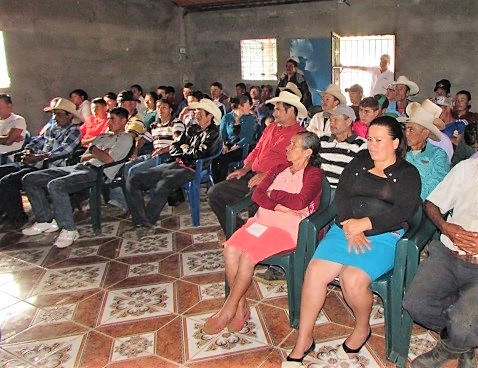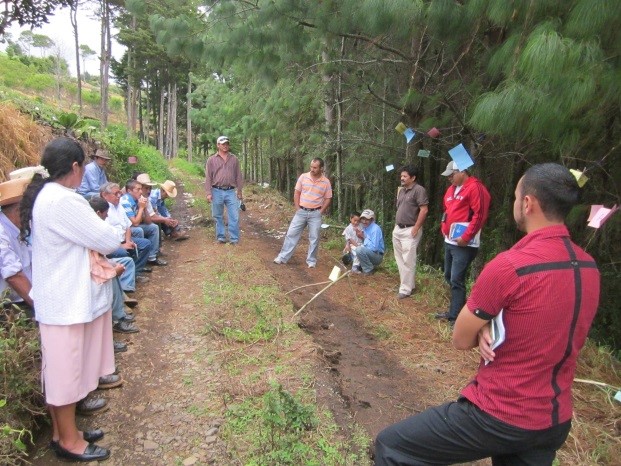


Governance for adaptation requires flexible policy and legal frameworks. Therefore, the upper sub-basin’s governance platforms required management instruments that would enable those adaptation options and forms of governance that brought about the greatest socio-environmental benefits to be valued and institutionalized. The Internal Regulations of several ADESCO Water Committees and the sub-basin’s Binational Community Committee were drafted, with the latter also updating its Strategic Plan (five-year plan) and Annual Operating Plan.
The process took into account new dynamics and trends in the sub-basin, as well as the EbA approach. The formulation of municipal policies was also supported (Local Adaptation Plans for La Palma and San Ignacio, El Salvador). Given that adaptation to climate change is immersed in a series of uncertainties about future climate impacts and development trajectories, these frameworks and instruments must be constantly evolving, always taking into account lessons derived from field and governance experiences. In this way, adaptation to climate change can move forward under a flexible approach, and through iterative cycles, generate short-term strategies in view of long-term uncertainties.
- The continuous presence and the rooting in the territory of Plan Trifinio is a powerful enabling factor that provides flexibility in decision making and also vertical scaling. This trinational entity works closely with communities and knows the territory well, yet also has political weight and leverage with authorities, as it is part of the Central American Integration System and is chaired by the Vice Presidents and Presidential Delegate of three countries (El Salvador, Guatemala and Honduras).
- The Sumpul sub-basin has an Integral Management Plan, the implementation of which falls on all sub-basin stakeholders, and which could be revitalized based on the progress made with EbA and the strengthening of governance for adaptation. Flexible governance should contemplate the monitoring, evaluation and updating of this Integral Management Plan based on lessons of implementes projects.
- The new management instruments prepared by the sub-basin’s governance platforms should in future be evaluated to determine how effective they were as adaptation responses. Any adjustments that result from this analysis will be a sign of flexible governance.